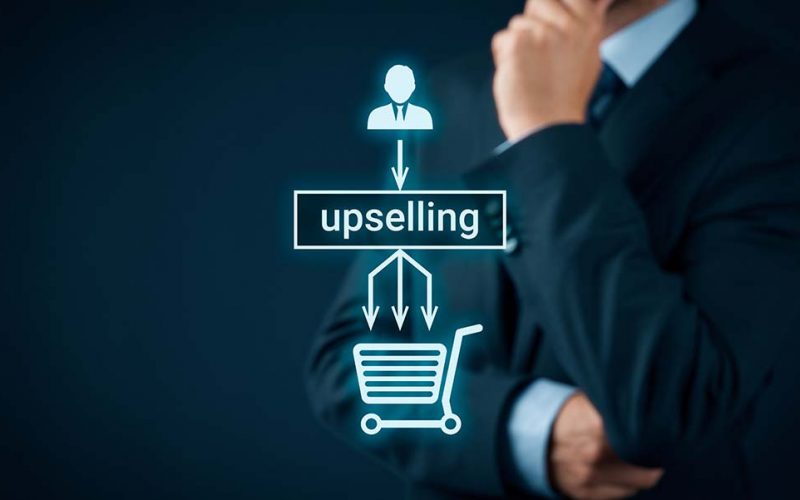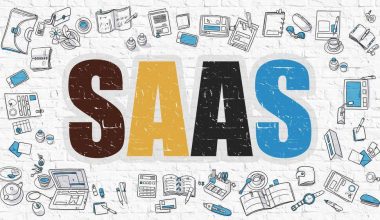Upselling is a sales strategy that involves persuading customers to buy a more expensive version of a product than they had planned to buy. And because recruiting new consumers can be significantly more expensive than selling to existing ones, businesses will frequently use strategies such as upselling to increase sales revenue. A salesperson, for example, could show a customer the deluxe model of a car next to the basic one, or highlight the advantages of an improved computer with a speedier hard drive. But it’s no news that most individuals most times use upselling and cross-selling interchangeably.
Well, for starters, cross-selling is the practice of providing clients with new products to complement an existing transaction. Cross-selling would be something like recommending speakers to go with the computer rather than an upgraded version of the computer itself.
Why Is Upselling Necessary?
Although sales techniques can elicit negative emotions in us, when used rightly, they can actually improve our buying experience. For the following reasons, online retailers rely significantly on upselling and cross-selling techniques:
#1. Allows Retailers to Develop Stronger Ties With Their Customers
When put into context, upselling is not a foul approach. It will turn out to be a customer satisfaction approach that also generates additional revenues if it focuses on helping your customers ‘win’ by recommending premiums, upgrades, or add-ons that will eventually deliver more value and make them feel like they got the better deal.
#2. Upselling to Existing Clients Is Easier Than Acquiring New Ones
Lead generation is a costly practice. It is considerably easier and less expensive to optimize a sale to a customer who already trusts you and has previously purchased from you or is going to do so now than it is to sell to a fresh prospect who has never heard of your brand. According to statistics, you have a 60-70 percent chance of selling to a current customer and a 5-20% chance of selling to a stranger. It’s a no-brainer for a lot of eCommerce companies looking to accelerate their growth and enhance their bottom line.
#3. Leads to Increased Customer Lifetime Value (CLV)
Client Lifetime Value is the net earnings contribution made by a customer to your business over time. You can categorize your consumers into three groups: not profitable, profitable, and extremely profitable. Higher CLV indicates that each customer creates more revenue for your company without you having to do anything more, and it also means that your organization has more money to spend on gaining new customers. Upselling is one of the most effective strategies for converting buyers into highly profitable customers and keeping them coming back for more.
#4. Customers Come Back for More
Upselling is distinct in the way it offers value to customers, causing them to return for more. By making it simple for clients to get what they need, you ensure that they will return if they need more of your products in the future. To ensure satisfied clients no matter what happens, provide excellent customer service in addition to your upselling attempts.
What Is the Difference Between Upselling and Cross-Selling?
Both approaches are used in eCommerce to maximize income by increasing the amount of money a customer spends with your business.
But then, upselling attempts to persuade customers to purchase a more expensive version of a product, whereas cross-selling focuses on offering targeted suggestions of relevant complementary products.
Example:
- Upselling: The consumer has placed an order for a pair of sneakers from last year’s collection. Exposing consumers to photographs of similar but more expensive sneakers from the latest collection may result in an upsell.
- Cross-Selling: A pair of sneakers has been added to the customer’s shopping cart. You may present similar product recommendations on the checkout page (for example, socks, insoles, or shoelaces) to encourage people to buy extra goods that increase the value of the purchase.
Examples of Upselling
Upselling is common in both Business-to-Business (B2B) and Business-to-Consumer (B2C ) )sales scenarios. Here are a couple of such examples:
- As part of the airline check-in procedure, an airline encourages passengers flying coach to upgrade to a first-class seat.
- For an extra charge, diners can add chicken or shrimp to a salad on a restaurant menu.
- An online book retailer’s checkout procedure offers a cheaper audio version of a print or e-book.
- A car salesperson suggests that a driver buy a vehicle with a higher-priced trim package that includes comforts such as leather seats.
- An online tool or resource is free in its most basic form, but unlocking premium, desirable capabilities requires payment.
Steps in the Upselling Process
CRM enables users to concentrate on their organization’s interactions with specific individuals, such as consumers, service users, coworkers, or suppliers.
Here are steps to follow when you decide to engage in the upselling marketing strategy.
#1. Building Customer Trust and Loyalty
Upselling should be a two-way street, with customers receiving more value in exchange for their loyalty and trust. When most people think of being upsold, they envision a used car salesman trying to persuade them into purchasing a sports car when all they needed was a basic vehicle. That is not how effective upselling works.
Instead, salespeople should focus on developing mutually beneficial connections with clients and encouraging long-term customer loyalty. To begin, this can be accomplished by acting as an adviser rather than a salesperson:
Know Your Product From Head to Toe
It’s crucial to be well-informed about the product or service you’re offering. It helps you to be ready to assist consumers and provide personalized support if required. They may lose faith in your company or product if you are unable to answer questions or address unique difficulties.
Make Suggestions Based on Customer Preferences
Customers can easily become alienated if they feel pressured to acquire something they don’t need. Instead, it should be evident that making the purchase adds actual value to their lives.
Make Customer Service a Priority
Overall, a great customer experience can determine whether or not an offer is accepted, but indifference accounts for more than half of lost customers.
#2. Learn About Your Customers and Their Needs
Upselling requires a thorough understanding of your clients. Understanding the wants, needs, and preferences of your customers strengthens their trust in your business. And listening to prospective buyers is one method to accomplish this.
Oftentimes, clients may contact sales personnel themselves and ask questions about specific features and perks — this is the exact information you want, being provided to you freely.
Personal familiarity with the products and services being sold can also be beneficial to the sales staff. This will allow them to put themselves in the shoes of their customers and better anticipate their needs.
Another method for gathering additional information is to collect and analyze all relevant client data and history. Using sales automation and analytics software can help with this process and make it easier to communicate with and understand existing clients. This data can be used to improve customer service by offering personalized offers and information based on the needs of the consumer. According to surveys, customers are not only willing to disclose personal information in exchange for personalized deals and offers, but they are also more loyal to organizations that adopt this strategy.
#3. Making Appropriate Recommendations
As previously said, customers may lose interest if you provide them with products and services that they do not desire or require. Making the proper recommendations is critical to upselling success and should be done with the knowledge you’ve gained about your client. So how do you go about that?
Understand the Customer’s Wants and Needs
Whatever you are upselling should reflect the customer’s overall needs in some way. While it may appear that making as many offers as possible is in the best interests of the business, recommendations should be limited to avoid confusing or overwhelming the customer with too many options.
Upsell, Don’t Oversell
Recommending upgrades that are excessively pricey in comparison to the original purchase may turn off the buyer. According to the general rule, an upsell should not increase the total price by more than 25%. Appropriate recommendations can be tailored to a customer’s needs using data from CRM and marketing automation.
How to Look for Upselling Opportunities
The best upsell clients are those who are already interested in your products and services. The entire concept of upselling is predicated on developing relationships with existing customers, which means that upselling essentially includes following up with clients on a regular basis to assess their current state and needs. This can include a range of techniques, such as:
- Asking open-ended questions and paying attention to your customers when they discuss their needs.
- Considering whether a product or service is already available on the market. If so, how can you make it better? If not, is it possible to create one?
- Examining whether there are any ways to improve on your current offering. Can you supply an outstanding version if you already provide a decent version?
- Examining your revenue streams.
- Understanding where your firm generates the most money might which will help you discover your clients’ demands and how to effectively upsell.
- Determining what your target market can and cannot use or afford. For example, if you’re selling software to college students, you might not see many possibilities to upsell them on the business suite. On the other flip side, you might be able to provide a student discount on a more comprehensive package.
- Examining client data from several departments. Depending on what they require, customers have different contacts within a company. Every one of those contacts will have information about them.
- Learning more about your customers by using web resources. This includes customer reviews, social media interactions, page views, shares, and so forth.
Upselling should happen so naturally as a result of resolving a problem or meeting a need. The most effective strategy to uncover upselling opportunities is to stay knowledgeable about what consumers need from a range of perspectives.
Examples of SaaS and E-commerce Upsells to Research and Experiment With
There are numerous upselling strategies available, and the best ones to use basically depend on your business and its clients. Check out these four great upsell examples from SaaS and eCommerce organizations that you may try for yourself to get some ideas.
#1. Upsell In-App
When you reach the end of your available storage space in Dropbox, you’re prompted to upgrade every time you check the app’s storage capacity. When your Dropbox is full, you can upgrade directly from the app.
So, offering the upsell within the app — at the right time and location — lets customers know and remember that there is a solution accessible when their problem arises.
Takeaway: In-app upsells, as long as they make it apparent why the customer will benefit from them, can be an effective approach to improve not only revenue but also engagement.
#2. Upsell in the Shopping Cart
This is by far the most popular way of upselling in eCommerce. However, there are both good and bad methods to go about this.
When you order flowers (from 1-800-Flowers), you’ll receive some relevant upsells that can help you send a better gift. For example, I’m given the option of adding chocolates, balloons, or a teddy bear.
As a customer, I value the ability to upgrade my purchase.
Compare that to GoDaddy’s all-over-the-place upsell parade when you buy a domain name. As Neil Patel, a conversion guru, explains:
“They could significantly enhance their conversion rate if they presented upsells that were more relevant to the product you just bought.” For example, when I added a domain name to my cart, they offered me a couple of other products.
“Why would they offer you a website seal when you most likely don’t have hosting, a website, or even web traffic?” I’m not sure about you, but I’ve never developed a website before purchasing a domain name.”
Takeaway: The most common upsell point is the point of purchase for a reason— it works. Customers are in the “purchasing” mode, with credit cards in hand, and ready to do business with you.
#3. Upsell in Your Customer Support Interactions
Before GrooveHQ canceled their Live Chat app, they offered it as a means to help consumers who received an excessive number of emails. It was a popular upsell with their clients because it assisted them in resolving a problem for which they had contacted GrooveHQ and added extra value (by helping them offer additional convenience to their customers).
Takeaway: By providing an upsell that can assist your customer in resolving their support issue, you may help them and your business win. Ordinarily, upsells should never be used in place of support; for example, if you can address the problem without an upsell, do so.
#4. Upsell After a Customer Success Milestone
Another common and efficient opportunity to upsell your consumers is when they’ve reached a certain point in their relationship with you, such as:
- Having been a customer for a year
- Spending a specified amount of time on your app
- Completing a predetermined number of tasks in your product
- Logging in a predetermined amount of times
- Adding specific integrations or add-ons
Use these occasions to remind your clients of the value they receive from doing business with you, and consider how you may upsell them to take things even further.
Ramit Sethi sells online classes to those who want to advance in their careers, personal finances, internet business, and productivity. He has a lot of potential for value-add cross-sells because he offers various courses.
He provides these incentives in a variety of ways, including immediately acknowledging a client’s success milestone.
After completing one of Ramit’s courses, a customer may receive an upsell email.
In it, Ramit offers an upsell to his membership program, along with a free month-long trial. It arrives at an opportune time: when the customer is feeling pleased about their accomplishments.
Takeaway: Target your clients for upsells when they reach certain customer success milestones when the value of your product is most obvious.
When it comes to upselling your customers, there are two rules to remember:
The Upselling Rules
There are just two general rules to remember when delving into the world of upselling
First Rule: ensure that they are satisfied with the service and experience you provided them. Never sell to a customer who is furious, dissatisfied, or disappointed.
There are a couple of options for identifying satisfied customers.
Labels in your help desk software can be used to identify consumers who are “fans.” That way, if a fan writes you and you smell a chance for an upsell, you’ll already know whether or not they’re interested.
A survey is another essential customer service indicator. There are just as equally effective to discover satisfied customers.
The Survey, which will be delivered to your customers on a regular basis (you can use an app like Promoter.io to automate this), will ask two simple questions:
- How likely are you to recommend *company_name* to a colleague or friend?
- What is the most important reason for your score?
The first question’s results tell you how many of your consumers are promoters, passives, or haters. The answers to the second question explain why.
Read Also: Plat Of Survey: Definition, Cost & All You Need to Know
While this information can help you make better decisions on a variety of fronts, understanding who your promoters are can be especially useful in determining who to target your upsell offers to.
Second Rule: Tailor your upsell pitch to emphasize how the consumer benefits. Remember how telling the buyer how they win works best for upselling?
Here’s another quote from Jeffrey Gitomer:
“Tell me how I’m going to win. You win if I win.”
While this is a sound rule for any salesperson, concentrating on how you can help your present customers win even more is crucial for upselling without being pushy.
Remember, no one is interested in your product. They are concerned about their difficulties. Writing content that demonstrates how you can fix those difficulties is the key to successfully upselling.
Takeaway: Evaluate and analyze the products and services you can upsell to your consumers, and then consider how those products can help them win.
Conclusion
If you’ve been burned by bad upsells in the past, it’s reasonable that you’re afraid to attempt them again.
But, hopefully, this piece has demonstrated that upsells can be reliable, upright, and beneficial in the growth of your business; plus they don’t have to be forceful or sleazy.
Upselling is a crucial skill for anyone providing customer service. This is because it can assist you in achieving your primary goal; which is making your clients happier and more successful.
Have you utilized or seen any fantastic upselling strategies that I overlooked? Or are you stuck on how to incorporate upsells in your own business? Please let me know in the comments section below.
Upselling FAQs
What is upselling a product?
Upselling is when you encourage a consumer to purchase a more expensive item or upgrade a product or service in order to increase the profitability of the sale. When used as a sales tool, it can come across as forceful when used in person, but when used online, organizations can adopt a more subtle approach.
What is upselling and cross-selling?
Upselling increases income by promising a higher-level product, and cross-selling does the same by suggesting other products to purchase. Sellers offer to check out for a higher quality goods, and that’s all there is to it. Upselling can be thought of as an upgrade to a previous purchase, whereas cross-selling is an extra transaction.
What are the upselling techniques?
The following are effective techniques to implement when upselling;
- Propose a relevant upsell.
- Consistently provide value.
- Identify the clients who require assistance
- Assist; Don’t sell anything.
- Provide a discount.
- Create a sense of urgency.
- Before you upsell, make sure your clients are satisfied.
- Use real-life examples to persuade them.
- Constantly follow-up






